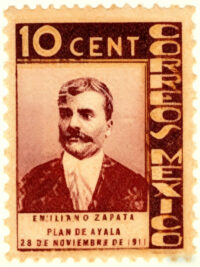Tlayecac is a centuries-old community and has a lot of history yet to be revealed.
Pre-Hispanic Period
The origin of Tlayecac dates back to 1300 BC, when Olmecs from the state of Veracruz and Tabasco came to populate part of the state of Morelos and dedicated mainly to hunting, fishing and agriculture. During the flourishing of the Toltecs, commercial relations were established between the center of Morelos and the great city of Teotihuacan, in what is now the State of Mexico.
By 1200 to 1300 AD the Tlahuicas and Xochimilcas, Nahuatl speakers, occupied the state of Morelos. Tlalnahuac, a province composed of fourteen villages, was born from this occupation:
- Tlayacac. Now, Tlayecac.
- Ayoxochiapan
- Jaloxtoc
- Jantetelco
- Jonacatepec
- Amacuitlapilco
- Tepaltzingo
- Chalcatzingo
- Atlacahualoya
- Tlalistac
- Pazulco
- Amayuca
- Tetehuamac
- Tetelilla
Of which the capitals of the province were Tetehuamac and Jonacatepec, although there are also versions that locate the capitals in Tlayecac and Tepaltzingo.

The Tlahuicas were under the domination of the Mexicas or Aztecs, a product of the conquest undertaken by Metecuzoma Ilhuicamina in the towns of Tlalnahuac. As dominated, the Tlahuicas had to pay tribute to the Aztecs with products such as cotton, corn, beans, chia, amaranth, precious feathers, pottery, amate paper and various types of war goods; and which were paid to the lordship of Yecapixtla.
The presence of the Tlahuicas dates from the early Aztec period (1100-1350) to the late Aztec period (1350-1521) and extended throughout the state of Morelos. Evidence of the pre-Hispanic presence in Tlayecac can be found in virtually every home and field of the community, such as human clay figures, spinning guides (locally known as “pirinolas” because of their pyramidal shape), remains of vessels and containers, and faces carved in stone.

It is presumed that there is a pyramid in the town’s centre where construction work has already been stopped by the INAH, but until now the necessary excavations have not been carried out for its correct assessment and protection.
The Conquest
After the conquest, the towns of Tlayacac (Tlayecac), Tecpatzinco (Tepalcingo), Atotonilco, Xalostoque (Jalostoc), Usuchapa, Tetelilla, Xonacatepeque (Jonacatepec), Xantetelco (Jantetelco) and Amayuca, passed into the direct hands of the bloodthirsty conqueror of Extremadura, Hernán Cortés, and then passed to his natural son, Martín Cortés, who settled in Tepoztlán. The tributes previously paid to the Aztecs became a benefit for the Popolocan foreigners (“savages”, in the Nahuatl language), as the Spanish Inquisitors were called by locals.

These lands were considered a patrimony of the Spanish royal crown, since they paid tribute and were called “realegas”. The lack of male descendants on the part of the Cortés’ family, forced the Dukes of Terranova, later the Dukes of Monte Leone, who did not reside in Morelos, or in Mexico, to pass through the female line; and they were not interested in politics but in the land rents and the tributes collected from them.

Marquesado del Valle, 1547. Image from “The new world of Matin Cortes” by Anna Lanyon.
During the evangelization, the Augustinians were in charge of founding the Monastery of San Marcos in Tlayecac in 1605 AD, presumably on the base of a pre-Hispanic pyramid.
At the time it was common practice for the Spaniards to force the local inhabitants to destroy their ceremonial centers; to force them to deny their beliefs and to build on these churches and impose the Catholic faith on them.
The monastery depended, initially, on the monastery of San Agustin in Jonacatepec and later on that of Zacualpan. The patronage or assignation of the “saint” of San Marcos may be a consequence of the early evangelization of Tlayecac, since it was during the first fifty years that the friars used the names of the apostles to name monasteries.
Independence
During the independence period, Tlayecac served as a refuge for Mariano Matamoros, who was looking for supplies to free Cuautla from the siege to which it was subjected. Around this time, Matías Zavala, priest of Tlayecac, informed Matamoros that he was being persecuted, so the latter decided to join the insurgents of which Colonel Francisco Ayala of Mapaxtlán was part of, and who gave his name to what is now the Municipality of Ayala.
Revolution

During the revolutionary period, Emiliano Zapata, by means of a letter sent on April 6, 1919, requested Colonel Jesús María Guajardo to meet with Captain Salomé G. Salgado and 100 of his men in Tlayecac in order to later take Jonacatepec, reinforce the troops and think of bigger targets.


